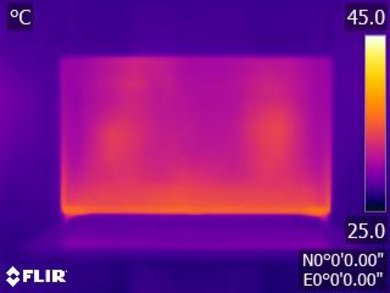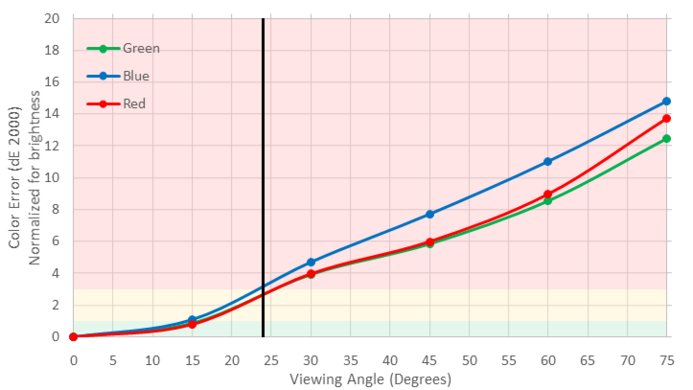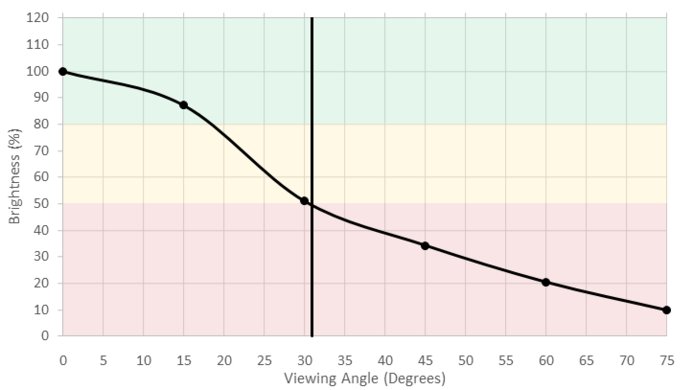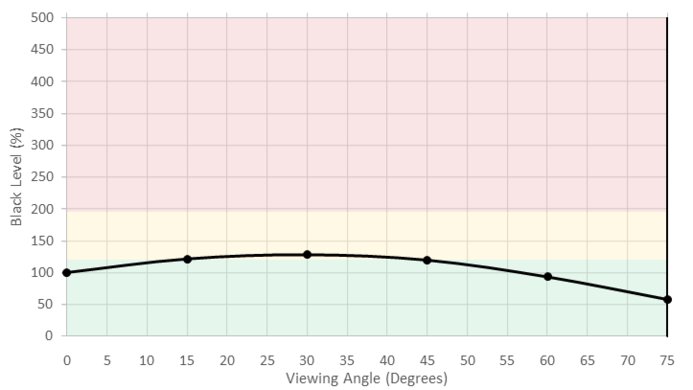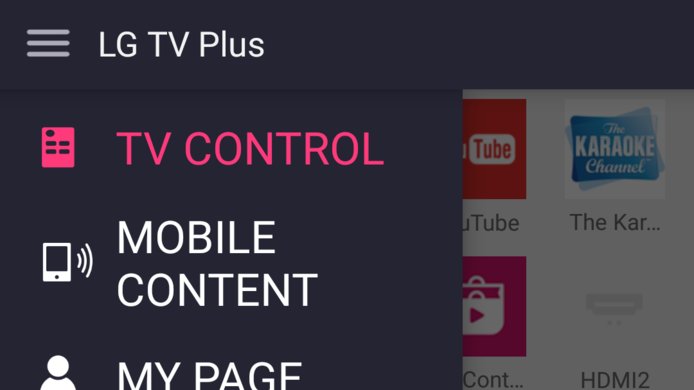Our Verdict
Good TV for a mixed usage. The LG UJ7700 has a wider viewing angle than average and decent picture quality. A combination of low motion blur, low input lag and excellent smart features makes it quite versatile.
- Decently bright
- Low input lag which is great for gaming
- Great smart features
- Picture quality in a dark room is below average
- Local dimming feature isn't great
Average choice for movies in a dark room. The UJ7700's blacks are not very deep or uniform. The local dimming feature is also better kept disabled since it can often be quite distracting.
Decent TV for watching TV shows. The viewing angle is a bit wider than average, and the WebOS smart platform is excellent. Unfortunately, though, it's not the brightest in SDR, which can cause issues in well-lit environments.
Good TV for watching sports. The LG UJ7700's picture is quite uniform and has little motion blur, but there is some dirty screen effect. It also has wider than average viewing angles, making it good for game days with a lot of company.
Great TV for playing video games. Input lag is incredibly low, and, motion is suitably good as well, making the whole experience quite responsive.
Good TV for HDR movies. Gets brighter than most other IPS LED TVs, and features Dolby Vision, which some users might appreciate. It can also display a wider range of colors without gradations, which is important for HDR.
The UJ7700's input lag does not deteriorate with an HDR input, which is great. The TV's already very good gaming capabilities translate well with HDR content.
Average PC monitor. Necessary resolutions are present, and the wider viewing angle helps keep the entire screen uniform when sitting close. It isn't the brightest though, and the RGBW pixel structure can cause some issues with straight vertical lines.
Changelog
- Updated Jun 20, 2018: Added the UK variants
- Updated Mar 12, 2018: Converted to Test Bench 1.2.
- Updated Aug 10, 2017: Converted to Test Bench 1.1.
- Updated May 26, 2017: Review published.
Check Price
Differences Between Sizes And Variants
We tested the 49" (49UJ7700). For the most part, we expect our review to be valid for other sizes of the UJ7700.
If someone comes across a different type of panel or if their LG UJ7700 doesn't correspond to our review, let us know and we will update the review.
| Size | US | UK |
| 43" | N/A | 43UJ750V |
| 49" | 49UJ7700 | 49UJ750V |
| 55" | 55UJ7700 | 55UJ750V |
| 60" | 60UJ7700 | 60UJ750V |
| 65" | 65UJ7700 | 65UJ750V |
Popular TV Comparisons

The UJ7700 is a good TV, but it's in the most popular price bracket of the market, so it has a lot of competition that often offers better value.
The Samsung MU8000 is better than the LG UJ7700 unless you have a wide seating area. The MU8000 uses a VA panel, which has better native contrast and black uniformity for dark room viewing, and it's brighter with most content. The MU8000 also has a faster response time. The UJ7700 uses an IPS panel which is better suited for a wide seating area in a bright room. The UJ7700 uses a different sub-pixel structure which may bother some people in certain viewing situations.
The LG UJ7700 is better than the LG UJ6300. Unfortunately, the UJ6300 has issues with temporary image retention and static images can remain visible on the screen for a few minutes after they have been removed. The UJ7700 does not have this issue. The UJ7700 also has an extra HDMI port compared to the UJ6300. Both TVs use a slightly less accurate sub-pixel structure which may bother some people for PC use.
The Samsung MU7000 and LG UJ7700 offer very similar overall performance. The UJ7700 uses an IPS panel which is better suited for a bright room with side seating or if you like to move around with the TV on. The MU7000 has a VA panel, which is better suited for a dark room, but has worse viewing angles so the image is best viewed from directly in front. The UJ7700 uses a less accurate sub-pixel structure which may bother some people for PC use.
The Samsung MU6100 and LG UJ7700 are very similar, but due to the difference in panel types, one may be better than the other depending on your needs. The UJ7700 uses an IPS panel which is better suited for a brighter room with a wide viewing angle. The MU6100 uses a VA panel which has better contrast and black uniformity, making it better suited for a dark room. The UJ7700 uses a different sub-pixel structure which may bother some people for PC use.

We buy and test dozens of TVs yearly, taking an objective, data-driven approach to deliver results you can trust. Our testing process is complex, with hundreds of individual tests that take over a week to complete. Most of our tests are done with specially designed test patterns that mimic real content, but we also use the same sources you have at home to ensure our results match the real-world experience. We use two main tools for our testing: a Colorimetry Research CR-100 colorimeter and a CR-250 spectroradiometer.
Test Results
The design of the UJ7700 is quite basic, but there are a couple of nice touches. The TV looks quite sleek, with accented edges and a basic stand but the design is definitely a step down from the 2016 UH7700. The stand is almost as wide as the TV, which may be an issue for those with narrow tables. The TV has an average thickness but unfortunately, some inputs out the back may be difficult to access if placed close to a wall.
The rear of the TV is similar to the 6 series LG TVs from 2016 such as the UH6500. It is reflective and attracts fingerprints. Many of the inputs face out the rear of the TV which may make them difficult to access if placed close to a wall.
The build quality of the UJ7700 is okay. The TV is almost completely plastic and doesn't look or feel as premium as the UH7700 from 2016.
The native contrast ratio of the LG UJ7700 is below average for an LED TV but is comparable to other IPS TVs. When set in a dark room, the low contrast ratio makes blacks look more grayish than really black, rendering dark scenes a bill dull and washed-out. This is a bit less problematic when the TV is set in a bright room since the ambient light can make the low contrast ratio a bit less noticeable.
With local dimming turned on, the contrast ratio stays about the same and this is due to the very poor performance of this local dimming feature.
The local dimming on the LG UJ7700 is bad. The number of zones is low and each zone spans over a large vertical area. The reaction time is not the fastest we have seen and when turned on in SDR, the local dimming dims the whole screen. Looking at our test video, you can see that the smaller highlights get dimmed a lot. Looking at other aspects that are affected by the local dimming, like the contrast ratio and the black uniformity, it is clear that the implementation of this local dimming is not the best and this is common to most other edge-lit LED TVs. For this TV in particular, the local dimming might cause more harm than good if activated, so it could be a better idea to turn if off or simply set it to 'Low' if you really want to use this feature.
Mediocre SDR peak brightness in the 'Expert (Dark Room)'. The TV's local dimming dims highlights in dark scenes in SDR content, as opposed to making them brighter like it does for HDR content, so we recommend disabling it. The 'Expert (Dark Room)' picture mode, while providing the most options to adjust the picture, is unfortunately quite dim. The 'Expert (Bright Room)' and 'Cinema' picture modes are also dim, but fortunately the 'Standard' and "Game" picture modes are much brighter. A plot of brightness over time in the 'Expert (Dark Room)' and 'Standard' picture modes is shown here.
If the TV appears too dim in a bright room, we recommend using the 'Standard' or 'Game' picture modes, disabling local dimming, using a 'W30' color temperature and using as many of our recommended settings as applicable.
Decent HDR peak brightness, though not as bright as most high end TVs. The TV's worst case brightness is still fairly bright, and local dimming helps the TV make small highlights in dark scenes even brighter, as shown by our smaller window tests. The 2% white window is the brightest test, while on last year's UH7700 it was the dimmest, indicating very different local dimming behavior. However, we recommend disabling local dimming as on this TV it adds a lot of visible blooming. A plot of brightness over time is shown here.
Update 07/07/2017: Certain settings and modes make the TV brighter or dimmer, see our additional review notes below.
The gray uniformity could be better on the LG UJ7700. Looking at the 50% gray uniformity test picture, large darker bands are visible and both sides are also darker. Watching our sports test clip during the testing, dirty screen effect is visible, and this in various sports like hockey and soccer.
Looking at the 5% gray test picture, not much stands out and the overall picture looks pretty even, which is a good thing.
The UJ7700 overall black uniformity is bad. When the local dimming is turned off, the screen is pretty even with only a bit more clouding in the upper right region and also the top edge is a bit brighter. Note here that the test picture does look more grayish than really black, but the black uniformity test is not about the level of black but more the evenness of the black.
When the local dimming is turned on, the black uniformity is very bad, as you can see on our test picture. There is a lot of blooming near the white cross of our test image, making the center of the screen way more bright than both sides. This is why the standard deviation number is so big when compared to the native standard deviation. Since the local dimming is so bad on this TV when set to max, it will cause more issues than if it was completely turned off. In a case like this, it is often recommended to completely turn off this feature.
The UJ7700 is quite good at handling reflections. It has a semi-gloss finish which diffuses reflects across the screen, reducing their intensity. This should be fine for an average room, but may be an issue for a very bright room.
Out of the box, the UJ7700 is not that accurate and home-enthusiasts may notice some inaccuracies. The white balance is on the warm side and the dE is pretty high plus the gamma is not tracking our 2.2 target very well. When it comes to the color accuracy, the accuracy is average at best with the cyan colors being the worst of the lot.
The calibration process on the LG UJ7700 was a bit longer than usual, especially while doing the white balance and even with the 20 point correction, the lower end could not be corrected completely. The gamma was flattened to track more closely to our 2.2 target, but with a small imperfection that matches the low end of the white balance.
The color space management on the UJ7700 was pretty good and the total color dE was halved, which is very good. Most of the colors, including the cyan, were tracking more closely to their targets after calibration. In the end, the calibration was worth the effort, since out of the box, it was pretty inaccurate.
You can see our recommended settings here.
Wide color gamut. Not as wide as most high end TVs but wider than last year's UH7700. In HDR content the red, blue and green primaries all fall short of their targets, especially the green, as most TVs struggle with deep greens. The TV isn't very accurate at showing the colors in the middle of the gamut, but is more accurate with DCI P3 colors.
The TV's EOTF follows the PQ curve fairly closely, but when shown our darkest grey slide with local dimming on high the TV turned the picture off completely. This shouldn't be a problem during normal usage though as this is a very extreme case. This EOTF was measured in the Cinema picture mode, the EOTF for game mode is shown here.
Update 07/07/2017: Certain settings and modes make the TV brighter or dimmer, see our additional review notes below.
Sub-par color volume. The TV's RGBW pixel structure prevents it from making bright colors anywhere near as bright as it makes white. The TV's local dimming helps it darken dim colors, but its very low number of zones prevent it from darkening the center of our black-with-white-border slide, showing the poor black level of its IPS panel.
The LG UJ7700 can display our gradient test image very smoothly and without any banding normally seen on 8-bit TVs. Overall, only very little imperfections can be seen in the darker greens, which is very good and banding should not be too problematic on this LG TV.
The UJ7700 does have some image retention, but it is quite minor, which is a very good result for an IPS TV since they are usually more prone to image retention. As you can see on our test picture, the retention right after the burn-in scene is really faint and after the first 2 minutes of recovery, is already gone. For this IPS TV, this is a very good score and people like gamers should not really be worried.
Although some IPS panels can suffer from temporary image retention, this doesn't appear to be permanent as seen in our long-term test.
The response time is good, so only a short trail can be seen following fast-moving objects. This is similar to the UH7700 from 2016.
The TV uses PWM at 120Hz to dim the backlight. This results in duplications following fast-moving objects, visible in the motion blur box. The backlight oscilloscope was taken in HDR mode, as the TV doesn't utilize its full brightness in SDR. 100% backlight in SDR looks like this.
The UJ7700 lacks a setting to reduce its flicker frequency to 60 Hz during 60 fps content, although its 120 Hz backlight does help somewhat to make motion look more clear.
The UJ7700 has a 60Hz panel and can interpolate lower frame rate content by setting 'TruMotion' to 'User' and increasing the 'De-Judder' slider. Fans of motion interpolation may be disappointed that it can't produce as strong of a soap opera effect as 120Hz TVs such as the UH7700 from 2016.
The LG UJ7700 is great at displaying content without stutter, even low frame rate content such as 24p movies. The response time of the panel helps to smooth the transition between frames, which is good.
The LG UJ7700 can display 24p movies without judder when they are played from 24p sources like DVD or Blu-ray players and only when the 'Real Cinema' option is turned on (Settings--> Picture options). On the other hand, the UJ7700 can't remove judder from 24p movies when they are played from 60p/60i sources like cable or satellite boxes.
This TV has a 60Hz panel and doesn't support any variable refresh rate features.
Outstanding low input lag, one of the best we've tested. In the Game picture mode, or in any picture mode when the input's icon is changed to PC, the TV has an excellent input lag of ~12 ms, which should please nearly any gamer. However when HDR content is played while the input’s icon is 'PC', the TV acts as though the icon wasn't 'PC', so the only picture mode with low input lag in HDR is Game mode.
Update 08/10/2017: webOS 3.6 fixed this PC mode HDR issue, HDR now plays properly in PC mode, with proper 4:4:4 color. All PC mode picture modes have low input lag, even in HDR.
Most common resolutions are supported. 4k @ 60 Hz @ 4:2:2 or 4:4:4 color is only supported when 'HDMI ULTRA HD Deep Color' is enabled for that input. 4:4:4 color is only properly displayed when the input's icon is set to PC. When HDR content is played when the input's icon is set to PC, the TV acts like the icon isn't PC, making the TV unable to properly display 4:4:4 color in HDR.
Update 08/10/2017: webOS 3.6 fixed this PC mode HDR issue, HDR now plays properly in PC mode, with proper 4:4:4 color.
Although the TV can properly display 4:4:4 color, its less accurate RGBW pixel structure produces artifacts when showing fine color detail. This is visible as jagged lines in our chroma 4:4:4 test image, shown here for the RGBW UH6500, compared to the perfect presentation of a true RGB TV such as the X750D shown here. This isn't a huge concern, but may be noticeable in some cases.
Decent frequency response and maximum volume. Maximum volume suffers from very strong amounts of compression. The bass extension falls a bit short as well.
The UJ7700 produces a fair amount of distortion. THD is elevated even on more reasonable levels.
The TV comes preloaded with many popular apps such as Netflix, YouTube and Amazon Video. Many more apps and other content can be downloaded from the LG Content Store.
The UJ7700 uses LG's excellent Magic Remote, which might be the best smart remote we've used. When the remote is pointed at the TV a cursor follows its movement, allowing deft users to quickly select their target. The remote's microphone is used for voice commands, which can do many things like changing settings and searching for content. At the center of the navigation pad is a scroll wheel that doubles as the select button, so the user can scroll to the option they want and quickly select it without moving their thumb.






